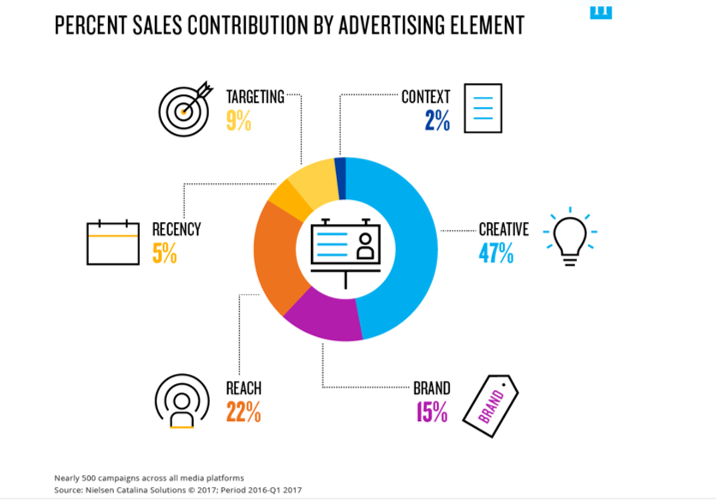 Source: Nielsen.com
Source: Nielsen.comA powerful duo: creativity and relevance.
Highly creative campaigns are significantly more effective than less creative campaigns. Not only do they improve attention and memorability, but they also increase positive associations and purchase intent. Essentially, consumers are more likely to respond to your ad if they find it interesting or entertaining.
But creating an ad your audience appreciates doesn’t only require creativity in the typical sense of the word. It demands the creator clearly understand its target.
According to a study by Ipsos, when creativity is framed with consideration of the audience’s perspective and how the brand fits into their world, the potential for sales increases by 20%.
But when the marketplace shifts quickly, it can be tough to keep up with changing consumer sentiments. Not to mention develop entirely new creative work in response to those shifts. But it is possible. During 2020, brands quickly worked to change ad messaging to reflect the pandemic’s impact.
As consumers now face ongoing economic uncertainty, brands should be vigilant about how the economy affects consumers’ feelings. For example, creative that reflects sensitivity to tightened budgets could be worthwhile.
However, consumer understanding shouldn’t hinder creativity in advertising. Instead, it should inform it—and make it even more impactful to those who see it and the brands that leverage it.
Key Takeaway:
Marketers must prioritize creativity in their campaigns. But creativity should never be an excuse for irrelevant messaging.
What's the importance of creative risk-taking?
“In advertising, taking the safe approach to creative is…too risky. Why? Because safe approaches are rarely memorable. It’s the unexpected that grabs attention, connects emotionally, and separates you from competition. And the unexpected is inextricably risky. So taking (the right) creative risks… is really the safest path to success.”
Ryan Kinkaid, VP Group Creative Director
Source: marketingarchitects.com

